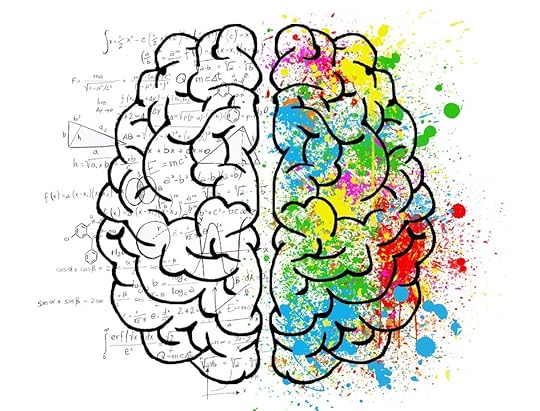Alan Watt's Blog, page 6
September 10, 2018
The Arc of a Scene

“I exhort you also to take part in the great combat, which is the combat of life, and greater than every other earthly conflict.” – Plato
Hi Writers,
In the rewrite, we seek to make our story as dynamic as possible by exploring the various ways our characters attempt to get what they want. Conflict arises when our characters’ attempts are met with obstacles – antagonistic forces that make them alter their approach. The back and forth interplay between protagonist and antagonist provides our scene with an arc.
As our work gets more specific in the rewrite, we tend to make discoveries that assist us in making the arc as dynamic as possible. For example, perhaps we have written a scene that begins with a man announcing to his wife that he wants a divorce, and by the end of the scene he is professing undying love. In the rewrite we might explore the specific beats that led him from threatening divorce to proclaiming his true love. Does the man simply turn on a dime? What prompts this reversal? How does he backpedal when he realizes how he lost her and must win her back? Is their relationship forever altered as a result of him dropping this bomb?
Each scene is informed by the scenes that precede it. By exploring the couple’s backstory and all that leads to this particular moment, we arm ourselves with information that informs the scene and make it as dynamic as possible.
We may want to explore these many possibilities through stream-of-consciousness writing in order to discover moments that bring the scene to life. What prompts the man to experience regret, beg forgiveness, rationalize his reason for seeking a divorce, demand an apology, experience doubt, reveal a secret, and suffer a crisis of faith? In short, what are all the ways we can explore the nature of the dilemma through the scene?
Notice how your scenes begin and end. Do they build in tension? Does something happen that reveals the characters in a new light? Can you make the scene more dynamic by exploring new ways for your characters to get what they want?
August 27, 2018
But That is What Really Happened

“Fiction reveals truth that reality obscures.” – Ralph Waldo Emerson
In writing fiction we inevitably come to that moment that is lifted directly from our real life. Fidelity to real life events can create a block in the rewrite. In an attempt to be faithful to the event, we can lose our connection to the truth of our story. The facts of the event are not enough – we must also provide our reader with context; what does this event mean in terms of the larger story? Sometimes we can have such an entrenched idea about what happened that we miss the essence of the incident. Our perception of the event can often limit our understanding of the event.
The question to ask is, “What do I want to express through this event?” Seemingly important points become suddenly irrelevant when we explore the nature of the event. It does not matter that our real Aunt Maddy and Uncle Petey live in a four-story Coney Island walk-up, when what we are interested in is the big fight they had on a Ferris wheel when she admitted the truth that he was not her first love. If it serves our story to be set on the plains of Nebraska, and what we are really interested in is exploring the prickly relationship between the fictional versions of our Aunt Maddy and Uncle Petey, we can still show their fight, though it may take place on a Ferris wheel overlooking a fairground instead of the ocean.
If we try to shoehorn real life events into our fictive world, it will almost certainly throw our story off the rails. It is like when we download a file on our computer and it asks us to put it in a different format to make it readable. By distilling the event to its essence, our reader can be made to understand the nature of Aunt Maddy and Uncle Petey’s marriage, regardless of the setting.
A similar principle applies to memoir writing. Just because something happened in our life does not mean it necessarily deserves to be in the memoir. If we were to recount every blessed event that happened in our life, the story would never end. If the same beat is played throughout the story, we might want to choose one or two beats to illustrate the point so that our reader does not endure endless repetition. What happens is less important than why it happens.
Wherever an aspect of your real life situation does not satisfy the purposes of your fiction, alter the event. Dressing our fiction with real life situations is like buying a suit off the rack. It is going to require alterations.
August 20, 2018
How Do I Begin?

“A novel’s whole pattern is rarely apparent at the outset of writing or even at the end; that is when the writer finds out what a novel is about and the job becomes one of understanding and deepening, or sharpening what is already written. That is, finding the theme.” – Diane Johnson
Where do our story ideas come from? From where do our characters emerge? The process of story creation is mysterious. Our stories are born out of an impulse to make order from chaos.
Stories reveal a transformation, a new way of seeing things. Notice how we dream in archetypes. Our dreams are filled with primal forces: the killer, the nurturer, the lover, the wise old man, the mysterious stranger, the innocent. It is through these primal forces that our subconscious seeks to make meaning of our lives and to resolve seemingly intractable problems.
Our characters are functions of this search. They exist as a means of illustrating the journey from fear to love, from revenge to forgiveness, from ignorance to wisdom. The writer’s job is to track this journey in a truthful and compelling way that leads to a transformation.
There is a difference between plot and theme. Plot is what happens, while theme conveys our story’s underlying meaning. In a wholly satisfying story our theme is in service to the plot and not the other way around.
Clarifying a theme is like staring into the sun. Looking at it head on blinds us to what we are seeking. If we try to figure it out, we become lost in our idea of the story. If I think my theme is “the truth sets us free,” that is terrific, but it is also a broad canvas. If I intellectualize this theme I might end up ruining perfectly fine scenes by killing the conflict in pursuit of my idea of this theme.
Our job is not to figure out our story, but to inquire. We are not seeking an answer, but rather, a wider understanding. When we try to figure it out, our story risks becoming ponderous and pedantic.
There are an infinite number of approaches to writing a first line. Some authors lead with their voice, while others introduce character, conflict, theme, or just flat out state the premise. In Jane Austen’s Pride and Prejudice, the story begins with the line “It is a truth universally acknowledged, that a single man in possession of a good fortune, must be in want of a wife.” In this statement the author arouses our curiosity by introducing a number of the elements to follow. We know that this story will likely involve the courting habits of the privileged.
In Grace Krilanovich’s novel The Orange Eats Creeps, she opens with the line “Dislodged from family and self-knowledge, and knowledge of your origins you become free in the most sinister way.” This line is filled with tension from its use of the word dislodge to suggest disconnection from self and loved-ones, to the end of the sentence free in the most sinister way, suggesting that our genealogy and dependency on loved ones is the tenuous anchor to our moral compass. That the line addresses the reader directly is subtly confrontational and jarringly intimate.
In Allison Burnett’s darkly comic novel, Death By Sunshine, the narrator B.K. Troop is established in the opening line: “When, after a trial of long months, I had at last finished writing my second novel, The House Beautiful, I set down my ballpoint pen and lifted a flute of congratulatory champagne to the mantel mirror.” In one sentence the author establishes the character. We know that B.K. is a writer, a romantic, and hilariously self-absorbed.
There are no rules to an opening line, except that it demands we continue reading.
Trying to figure out an opening line is too much pressure to place on yourself. Rather, when you allow your focus to be on the story as a whole, your opening line tends to find you. If you insist on nailing the opening line before proceeding, you may become paralyzed by the pressure. In fact, you may not yet be armed with the necessary information to write it. Sometimes, through writing your first draft, you discover what the opening line wants to be. If you are pleased with your beginning, that’s terrific, and if not, you can just continue writing the story. Because you may discover that it is the last line to be written.
August 13, 2018
The True Nature of Our Characters

“And the day came when the risk to remain tight in a bud was more painful than the risk it took to blossom.” – Anais Nin
Good writing is a synthesis of ideas and instincts working in concert. Whenever the writer is bound by either one of these elements, he is out of balance. We have been indoctrinated to believe that good writing is a skill rather than a practice. When we are connected to the aliveness of our characters’ internal conflict, our writing becomes compelling and unpredictable.
Let’s say, for instance, that we envision our hero getting increasingly frustrated with the antagonist throughout the story, but when we explore the nature of “increasingly frustrated,” we see that it actually looks different than we had imagined. In the course of one’s frustration, one might excuse oneself from the situation, and then feel guilty for leaving. Or question why he is so impatient. Or struggle between self-doubt and growing fury. In short, frustration contains a multitude of experiences that cannot strictly be called frustration. Mounting frustration is a process and may contain an infinite number of emotional colors, all of which vary depending on the characters in question and the overarching dilemma that preoccupies them.
Our character’s frustration is particular to his situation. By exploring the specifics of his particular conflict, we are led beyond our idea of frustration. In fact, in the rewrite we may discover that this character experiences rage, apology, embarrassment, soul-searching, despair, hopefulness, excitement, grief, suspicion, madness, and even gratitude at his current situation. The nature of a frustrating experience may differ greatly from our idea of what it means to feel frustrated.
The protagonist of Joseph Heller’s Catch-22 wants to return home. He is stuck, fearing for his life in a distant war-torn country, and is only permitted to leave if he can prove that he is mentally unstable. But this is war! To say that he is scared is proof of his sanity. To say that he wants to continue flying dangerous missions is praised as patriotic. Either way, he is not going home. As the story progresses, we experience the hero’s mounting frustration as a result of his hope, awareness, grief, and despair.
We are always seeking balance. In doing so we can overcompensate, and this produces drama. There is often a difference between our preconceived notion of a character’s experience and the true nature of that experience. For instance, the nature of passivity includes rage. The nature of confidence includes insecurity. The nature of hatred includes love and vice versa.
By exploring the nature of our characters’ experiences, our character’s internal struggle becomes more truthful and dynamic. This is crucial to consider in Act Three. Just because our protagonist is aware of his dilemma does not mean he is without conflict. His situation continues to be dire as he struggles to find his way back home.
There can be a tendency in the third act to steer our protagonist away from mounting conflict by endowing him with wisdom he has not earned. This robs our story of rich drama in Act Three. Wisdom is not merely a function of self-knowledge but a willingness to make a new choice in spite of one’s old beliefs.
August 6, 2018
Backstory

“The past is prologue.” – William Shakespeare
When we are feeling stuck, it is inevitably because some part of our backstory is unclear. Backstory refers to what happened before our story began, and is often revealed through exposition. A clearer understanding of our backstory will inform our characters’ present circumstances.
The challenge in clarifying backstory is to not force it to conform to our idea of the story. A character’s place of birth, level of education, relationship history, family dynamic, culture, ethnicity, religious beliefs, and political leanings are all in service to our story. Character is malleable; all of this information is changeable.
The act of seeking the ideal character is not something we can figure out. As we inquire into our story, ideas about are character’s past will come to us. They might seem surprising and unusual. They might even appear to want to take our story in a different direction.
Sometimes the appearance of a different direction is really just a stretching of the original idea. Nothing is lost if we entertain an idea for a few moments, yet I am frequently surprised at how rigid new writers can be about this. It is almost as if they are trying to hold the whole story in a small container, and fear that to add one more idea might lead to a super-saturation point.
Let’s say that I have a character who feels somewhat nebulous. He is a Senator, running for reelection. As I inquire into his backstory, I sense that while married he had a child with another woman, a situation that has been kept quiet for years. What on earth does that have to do with my main story about his best friend, a priest who is dying and wrestling with the decision of whether or not to reveal a dark secret?
I begin to wonder if this is a story about secrets. Perhaps I wonder what it means to have a secret, and if it is possible to be forgiven when a secret has been held for such a long time that it has affected the lives of many people. Perhaps I wonder about the value of revealing the truth, and weighing revelation against silence. Perhaps I wonder about integrity. Should a man come clean about his past, even if it means it could adversely affect not only his career, but the lives of his family?
All of these questions sprang from the single impulse: “What if the Senator had a child with another woman?” The nature of the “child with another woman” circumstance in the context of this story might have to do with secrets. In another story, the nature of “child with another woman” might involve issues of responsibility, isolation, guilt or forgiveness. It is valuable to be attuned not only to how new backstory information affects the drama, but also to its deepening of the greater meaning at the heart of our work.
July 30, 2018
Staying Connected to the Source

“To raise new questions, new possibilities, to regard old problems from a new angle, requires creative imagination.” – Albert Einstein
The rewrite uses the left and right brain simultaneously. We’re shifting gears between our imagination and our analytical mind. As our story evolves, we begin to see that it’s not precisely the book we’d imagined. There may be scenes and characters that we thought would be in our first draft, but couldn’t find their way in, while there also may be scenes we can’t bring ourselves to cut, yet they clearly don’t belong.
How do we know what to keep and what to discard? How do we make our story become what it is supposed to be? Everything else can be held loosely, but that raw primal impulse that got us started is the source of our story. We must stay connected to it as we continue to shed, layer, shift, edit, and add new material.
Through this process we’re moving in the direction of the most fully realized version of our story. It’s not a linear process, but we do have some guideposts to keep us on the path.
As we move more deeply into our first act, we’re looking for ways to show the opposite side of the protagonist’s apparent problem. Let’s explore how an opposing argument is revealed roughly two-thirds of the way through our first act, thus illustrating the dilemma. In essence, a dilemma is a “damned if I do, damned if I don’t” situation. Once we’ve explored the “damned if I do” through the inciting incident, we must take a look at the “damned if I don’t” aspect through the opposing argument. It is only through understanding the nature of the dilemma that our reader will understand clearly why our protagonist makes his decision at the end of Act One. The opposing argument informs the protagonist’s dilemma and keeps our reader connected to our theme.
Let’s say a man wants to protect his grandparent’s legacy, a sprawling ranch that’s been passed down through generations and is now entrusted to him. Times are tough and his ancestors’ legacy is in jeopardy. Perhaps, in an attempt to protect the ranch, he commits a crime which puts him in jail. While incarcerated, he realizes that his grandparent’s legacy was not their ranch, but rather, their work ethic and integrity. In the end, though defeated, he experiences a shift in perception, and it is from this new understanding that he can build a new life and carry on the true legacy of his forbears.
The dilemma could be that in order to protect his idea of his family’s legacy (the ranch), he must jeopardize his reputation. In the first act it would be important for the writer to understand both sides of the protagonist’s dilemma in order to illustrate this for the reader, otherwise the central conflict could become vague and the underlying meaning of the story could be lost. If the inciting incident was a situation that foretold the loss of the ranch and all of the various consequences (e.g., how it might affect his livelihood, his family, his reputation, and his future), the opposing argument might involve the presentation of an alternative, a single nefarious deed that could make all of his troubles go away, but flies in the face of who he believes himself to be. Act One is where this dilemma is set up through action, leading inexorably to the decision to commit the crime that sends him into the second act.
Although we may likely have written a scenario that can serve as the opposing argument, the challenge in the rewrite is to make it as clear as possible. If the man lacked integrity, it would weaken the dilemma and confuse the reader. If the man didn’t care about his family, it would lessen the jeopardy and the reader would not be clear on what was at stake. In the rewrite, we want to look for ways to raise the stakes, not in an attempt to “milk the scene,” but rather, to clarify the dilemma, so that our reader remains connected to the theme.
TODAY
Identify a scenario somewhere in the middle, or perhaps two-thirds of the way through your first act where you might illustrate the opposing argument of the protagonist’s dilemma through conflict.
July 23, 2018
Humor in Tragedy

If you’re going to write a tragedy, infuse your story with humor. Humor pulls us towards the characters and makes us care. It also ensures that your ending will resonate.
Tragedy is not about a death – it is about the context of that death. Tragedy isn’t about someone dying – it’s about a character recognizing the error of his ways when it’s too late. Death isn’t tragic; it’s inevitable. It’s the context of the death that illustrates the theme. We understand hubris, false piety, vanity, the desire to save the world, and how these traits can lead to our downfall. The tragedy of Mercutio’s death in Romeo and Juliet lies not in the act of him dying, but in the pointlessness of it, and in how his pride underscores the theme.
July 13, 2018
Conflating Characters

Sometimes we’ve written characters that don’t belong in our story because their function is redundant. The character may be engaged in conflict that doesn’t add anything new to the story. In fact, the conflict might distract the reader from what we’re trying to express.
If we find ourselves wondering why a character is in our story, and we’re unclear on what his function is, it’s possible that he doesn’t belong. When we imagine removing him from the story, does it tighten the narrative? Or is it possible that he serves a crucial function, but a function that might be better served through another character? We can always conflate characters by distilling one character’s function and giving the necessary traits and situations to another character in the story.
July 6, 2018
Building Sentences

“You become a good writer just as you become a good joiner: by planing down your sentences.”
– Anatole France
There are no rules that limit the length of a sentence, but when our sentences are strung together by a variety of actions, the sentence can begin to strain credibility.
What is wrong with this sentence? “Sally ran up the stairs, went into her bathroom, and brushed her teeth.” Watch out for three or more events in a sentence. Writers sometimes cram so much into a sentence that one can almost feel the sentence laboring under the weight. Try this. “Sally ran up the stairs to her bathroom. She stood at the sink and brushed her teeth.”
The key is to be aware of what you’re expressing in the sentence. For example, if we were attempting to express the instantaneousness of a situation, the following sentence might work just fine: “Paul flew to Japan, got off the plane, and found a job.” However, if we have simply strung actions together in the hope that we’re quickening the narrative – we’re not. Though it’s very common, and you’ll see it in almost every department store bestseller, it’s still sloppy writing.
February 22, 2018
Own Your Work
Just because you might be a first-time novelist, it doesn’t mean you’re not the authority over your work. No agent, publisher, or film producer knows more about the inner workings of your story than you.
They may have notes, and they may have some great ideas, but none of those notes can be applied if you abdicate authority over your work. Never agree to a note simply because you think it will improve the odds of selling your first novel.
The moment the first-time novelist abdicates authority over his novel is the moment he loses connection to something ineffable, something that is often difficult, and sometimes impossible to recover from.
When it comes to owning our work, there is no difference between being a first-time novelist and a seasoned veteran. Unless we’re anchored to what we’re attempting to express and are willing to hold onto that, we are just hacks.




